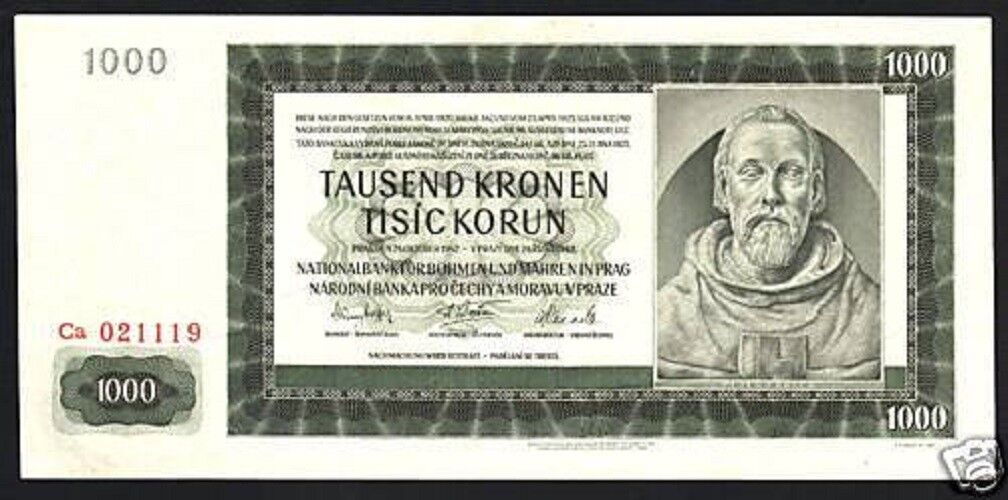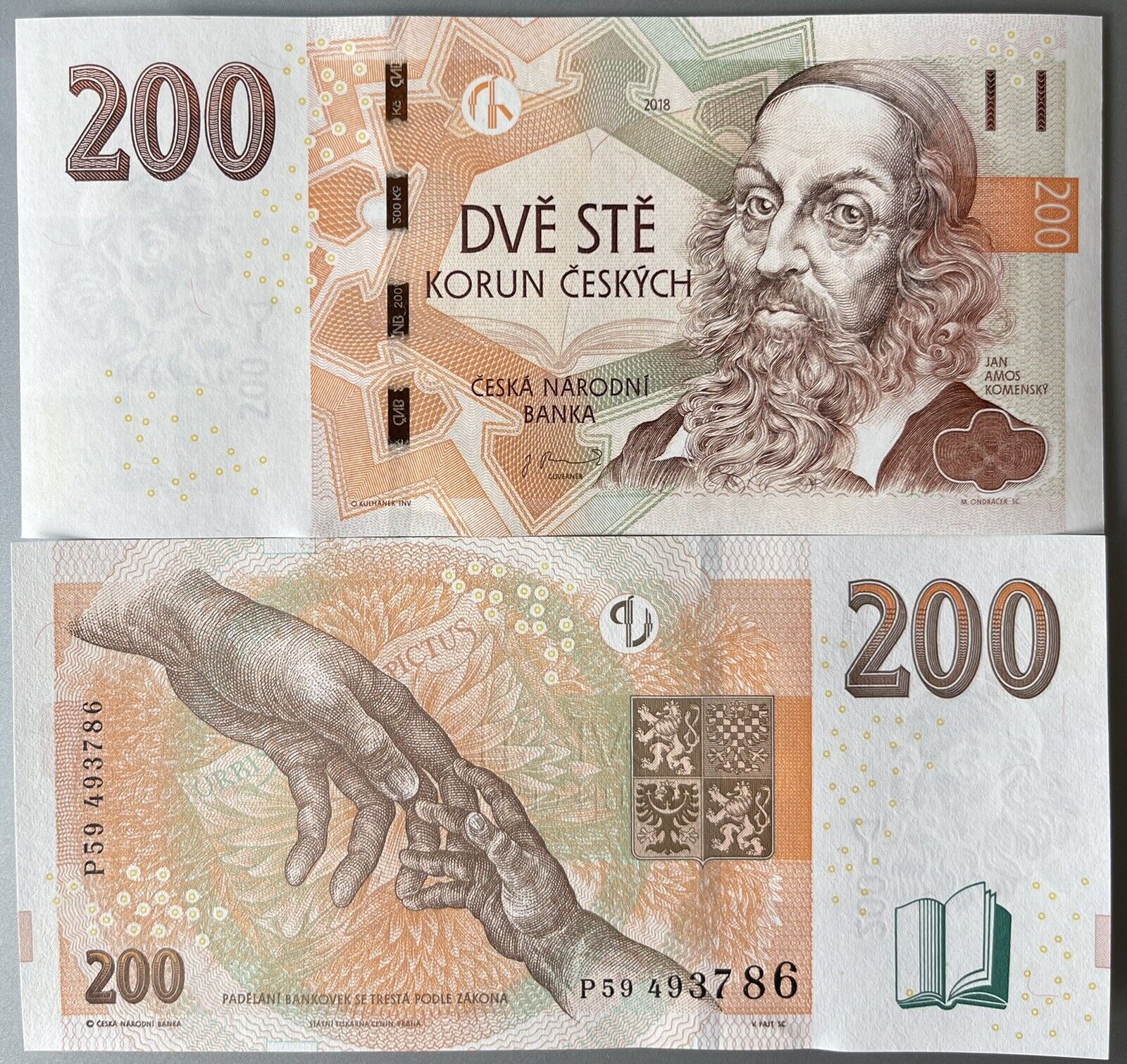-40%
Bohemia and Moravia banknote - 100 sto korun - year 1940 - Prague Castle - rare
$ 8.44
- Description
- Size Guide
Description
The Bohemian and Moravian koruna, known as the Protectorate crown (Czech: Protektorátní koruna; German: Krone des Protektorats), was the currency of the Protectorate of Bohemia and Moravia between 1939 and 1945. It was subdivided into 100 haléřů.History
The Bohemian and Moravian koruna replaced the Czechoslovak koruna at par and was replaced by the reconstituted Czechoslovak koruna, again at par. It was pegged to the Reichsmark at a rate of 1 Reichsmark = 10 koruna and was initially equal in value to the Slovak koruna, although this currency was devalued in 1940.
Banknotes
Czechoslovak banknotes for 1 koruna and 5 korun were stamped (and later printed) with "Protektorat Böhmen und Mähren" over "Protektorát Čechy a Morava," and subsequently issued in Bohemia and Moravia beginning on February 9, 1940. These were followed by regular government issues of 1, 5, 50 and 100 korun in 1940, 10 korun in 1942, and 20 and 50 korun in 1944. Nationalbank für Böhmen und Mähren in Prag (National Bank for Bohemia and Moravia in Prague) introduced 500 and 100 korun notes in 1942, followed in 1943 by overprinted Czechoslovak 5000 korun notes. In 1944, the National Bank issued regular 5000 korun notes.
Prague Castle
Prague Castle (Czech: Pražský hrad; [ˈpraʃskiː ˈɦrat]) is a castle complex in Prague, Czech Republic, built in the 9th century. It is the official office of the President of the Czech Republic. The castle was a seat of power for kings of Bohemia, Holy Roman emperors, and presidents of Czechoslovakia. The Bohemian Crown Jewels are kept within a hidden room inside it.
According to the Guinness Book of Records, Prague Castle is the largest ancient castle in the world, occupying an area of almost 70,000 square metres (750,000 square feet), at about 570 metres (1,870 feet) in length and an average of about 130 metres (430 feet) wide. The castle is among the most visited tourist attractions in Prague attracting over 1.8 million visitors annually.











